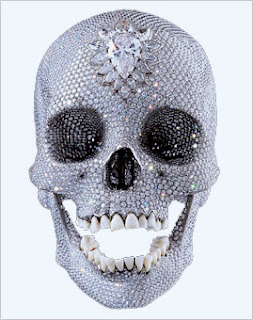Every shape of diamonds does not have the same proportions. Every diamond shape requires its own guidelines in order to achieve maximum beauty. Due to mathematical differences, inherent in different shapes, the table and depth guidelines are formulated to maximize fire & brilliance. This is done to have a magnificent display that highlights the individuality and character of each shape.
Girdle:
The girdle is the outer edge of a diamond. It usually has a frosted appearance. Many diamonds are also finished with a fully polished or even a faceted girdle. This characteristic does not affect the value of a diamond and is often more a reflection the diamond cutter's preference. The girdle is rated in terms of thickness. Girdle size is generally defined as Extremely Thin, Very Thin, Thin, Medium, Slightly Thick, Thick, Very Thick, or Extremely Thick. The girdle can also be described as a range of these terms such as Thin to Thick. Avoid the two Extremes. When purchasing a diamond, select one with a girdle that is neither Extremely Thin nor Extremely Thick.
Culet:
The culet is the bottom point of the diamond. In many cases this point actually has a very small facet. The culet is referred to in terms that relate to the presence or size of this facet. The culet is generally graded as None or Pointed, Very Small, Small, Medium, Slightly Large, Large, Very Large, and Extremely Large. Smaller is more desirable.
Polish:
This characteristic refers to the finishing or final polishing of the facets, or flat surfaces. Contrary to common belief, diamonds are ground and polished, not chipped away, until they reach their final form. Each facet should be carefully fashioned by the diamond cutter to shine and be free from polishing imperfections. The polish of a diamond is generally defined as Poor, Fair, Good, Very Good, or Excellent. When purchasing a diamond, select one with a polishing grade of Good or above.
Symmetry:
This characteristic refers to the alignment and positioning of the facets, or flat surfaces. Each facet should be carefully positioned by the diamond cutter in proper proportion and relationship to the other facets. The alignment of each facet should be sharp and precise; improperly joined facet junctions can make a diamond appear uneven. The symmetry of a diamond is generally defined as Poor, Fair, Good, Very Good, or Excellent. When purchasing a diamond, select one with a symmetry grade of Good or above.
Fluorescence:
This characteristic refers to the diamond's ability to fluoresce under ultraviolet light. When exposed to UV light, many diamonds will give off a distinctive glowing blue coloration. Although fluorescence may be displayed in various shades, blue is the most common in diamonds. The fluorescence of a diamond is defined by its intensity as either None, Faint, Medium, Strong, or Very Strong. Most of the time fluorescence isn't an issue unless the intensity is Strong or Very Strong. In the very high colors D, E, and F, Strong fluorescence is considered less desirable. Ironically, in slightly lower colors of J and below, Strong fluorescence is desirable.


























